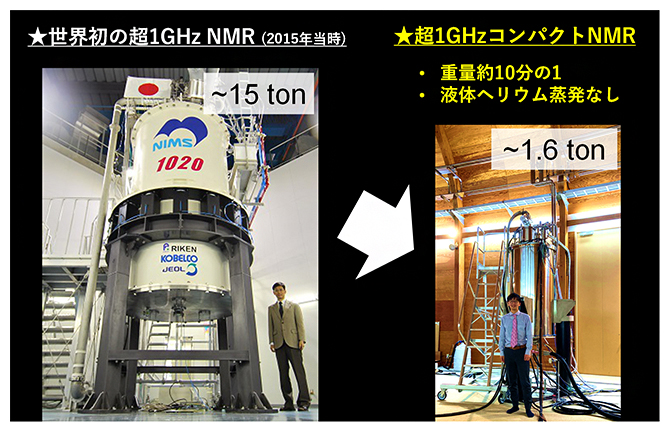コンピュータを使ったツールで、水を取り込みやすい結晶構造を予測し、医薬品開発・製剤化に必要な知識を提供 Computer-based tool predicts which crystal structures are likely to take on water, providing essential knowledge for drug development and formulation
2022-10-24 ニューヨーク大学 (NYU)
医薬品、農薬、電子機器など、水和結晶に依存する産業は、水和物がいつ生成するかを予測し、水の存在がこれらの結晶の特性にどのように影響するかを決定する課題に直面している。
この課題を解決するため、研究者らは、ある化合物が水和物結晶を形成する可能性が高いかどうかを迅速に判断するための計算プロトコルを開発した。研究チームは、これまで困難とされてきた化学量論的水和物と非化学量論的水和物の両方を予測するシステムを開発した。化学量論的水和物(水分子と他の分子の比率が定義されている水和物)の予測は難しくないが、標準的なプロトコルでは膨大な計算資源を必要とし、時間とコストがかかる。一方、結晶中の水分子と他の分子との比率が定義されていない非化学量論的水和物を、簡単かつ正確に予測するためのツールは、既存のものにはない。
そこで研究チームは、「MACH」(Mapping Approach for Crystal Hydrates)と呼ぶプロトコルを開発した。MACHは、結晶の構造や化学環境に基づいて、結晶内のどこに水が入りやすいかを系統的に判断するためのルールを確立している。
MACHのアルゴリズムは、まずコンピュータに、乾燥した状態の結晶構造を構築するよう指示する。そして、その結晶構造に液体の水を重ね合わせ、水が乾燥した骨格に収まるかどうかを調べる。このとき、一部の水分子は結晶の分子と同じ空間を占めようとするが、これは物理学の基本法則に反するため、MACHアルゴリズムではこれらの水分子を即座に排除する。
次にMACHは、水がホスト結晶とどのように相互作用するかについて追加のルールを検討し、結晶に取り込むことができる水分子の数と位置をさらに減らしていく。このステップを、水分子の配置を変えながら何度も繰り返す。
研究チームは、植物由来化合物のブルシン、抗うつ薬の塩酸パロキセチン、糖尿病治療薬の酒石酸シタグリプチンという3つの薬物の水分子を、MACHによって正確にマッピングできることを実証した。
<関連情報>
- https://www.nyu.edu/about/news-publications/news/2022/october/scientists-map-water-in-molecular-crystals.html
- https://www.pnas.org/doi/10.1073/pnas.2204414119
安定な分子性結晶水和物のアプリオリ予測のためのデータ駆動型・トポロジカルマッピングアプローチ A data-driven and topological mapping approach for the a priori prediction of stable molecular crystalline hydrates
Richard S. Hong, Alessandra Mattei, Ahmad Y. Sheikh and Mark E. Tuckerman
Proceedings of the National Academy of Sciences Published:October 17, 2022
DOI:https://doi.org/10.1073/pnas.2204414119

Significance
The problem of predicting molecular crystalline hydrates through crystal structure prediction (CSP) is a significant challenge due to the range of possible stoichiometric and nonstoichiometric water contents and the large number of degrees of freedom that need to be considered during the crystal structure search. The algorithm introduced here represents an advance in this area that allows for quick and efficient mapping and prediction of hydrate crystal structures from an anhydrous framework without requiring a priori specification of the water content. Overall, this approach can serve as a computationally inexpensive tool to complement standard CSP for uncovering stable hydrate structures.
Abstract
Predictions of the structures of stoichiometric, fractional, or nonstoichiometric hydrates of organic molecular crystals are immensely challenging due to the extensive search space of different water contents, host molecular placements throughout the crystal, and internal molecular conformations. However, the dry frameworks of these hydrates, especially for nonstoichiometric or isostructural dehydrates, can often be predicted from a standard anhydrous crystal structure prediction (CSP) protocol. Inspired by developments in the field of drug binding, we introduce an efficient data-driven and topologically aware approach for predicting organic molecular crystal hydrate structures through a mapping of water positions within the crystal structure. The method does not require a priori specification of water content and can, therefore, predict stoichiometric, fractional, and nonstoichiometric hydrate structures. This approach, which we term a mapping approach for crystal hydrates (MACH), establishes a set of rules for systematic determination of favorable positions for water insertion within predicted or experimental crystal structures based on considerations of the chemical features of local environments and void regions. The proposed approach is tested on hydrates of three pharmaceutically relevant compounds that exhibit diverse crystal packing motifs and void environments characteristic of hydrate structures. Overall, we show that our mapping approach introduces an advance in the efficient performance of hydrate CSP through generation of stable hydrate stoichiometries at low cost and should be considered an integral component for CSP workflows.



